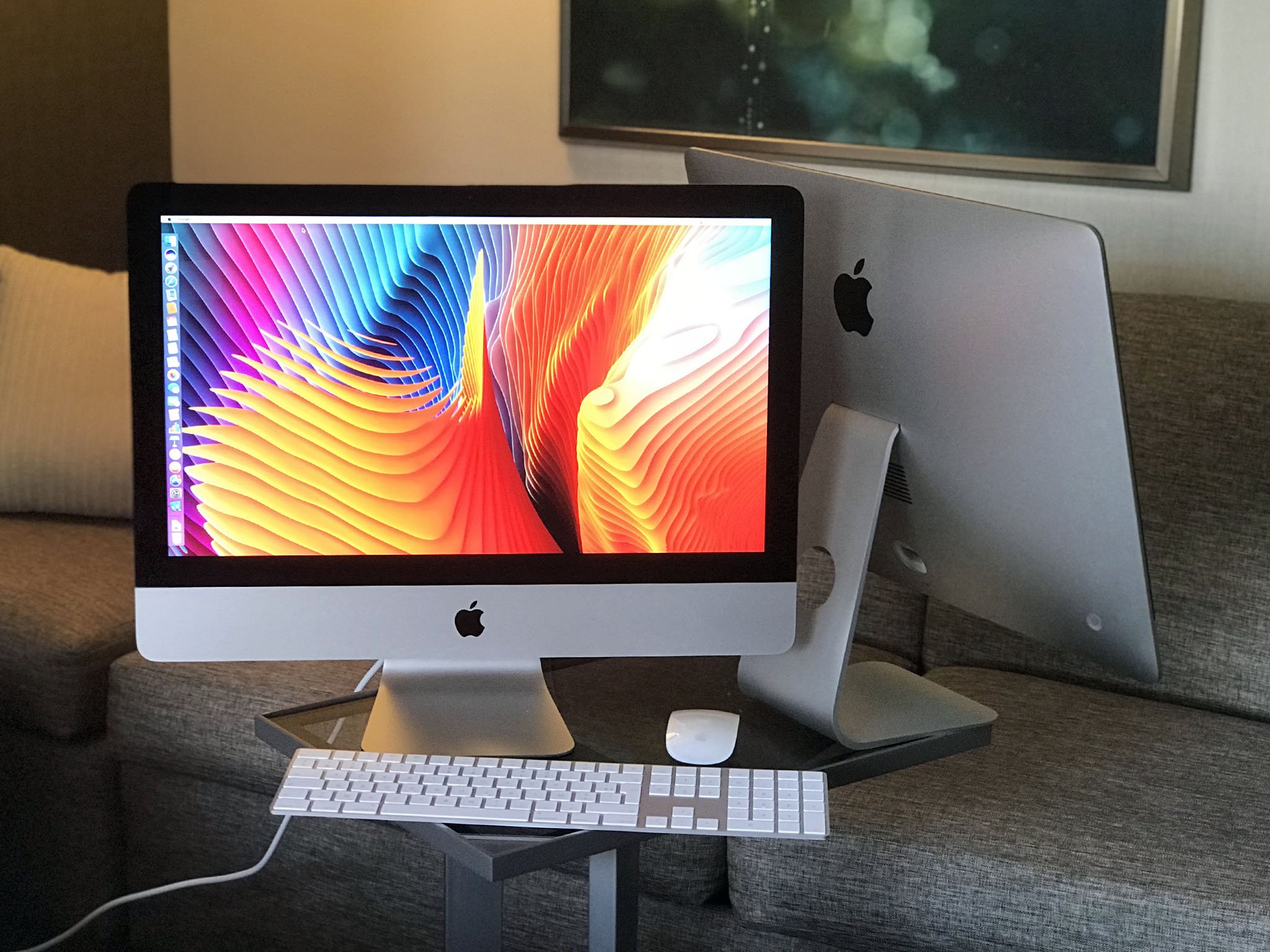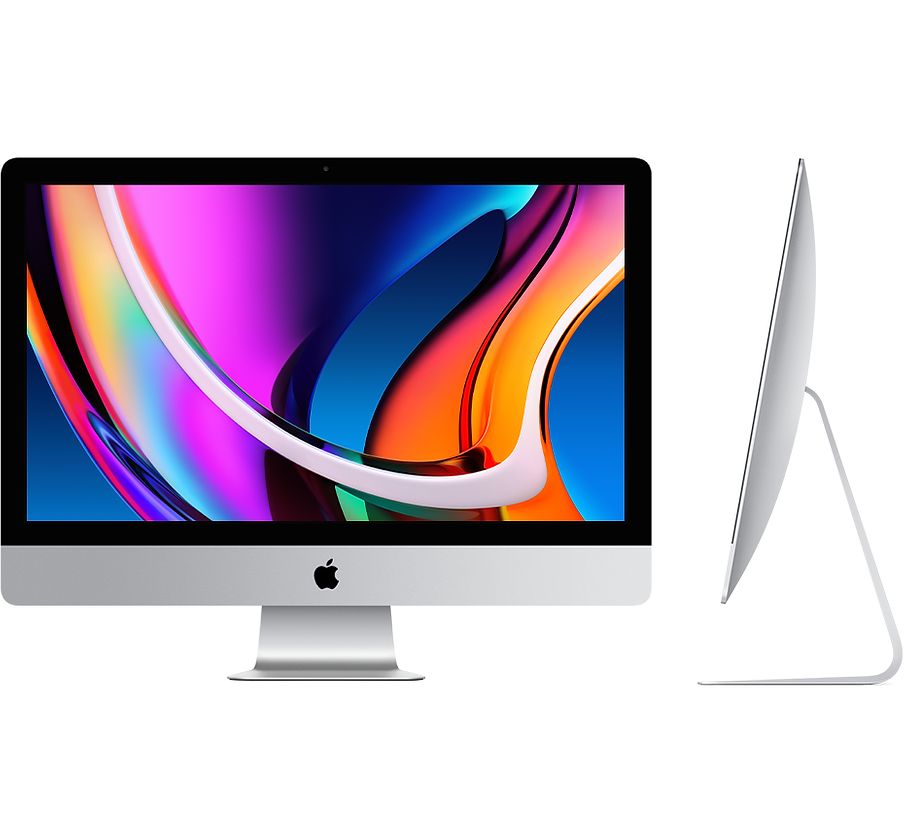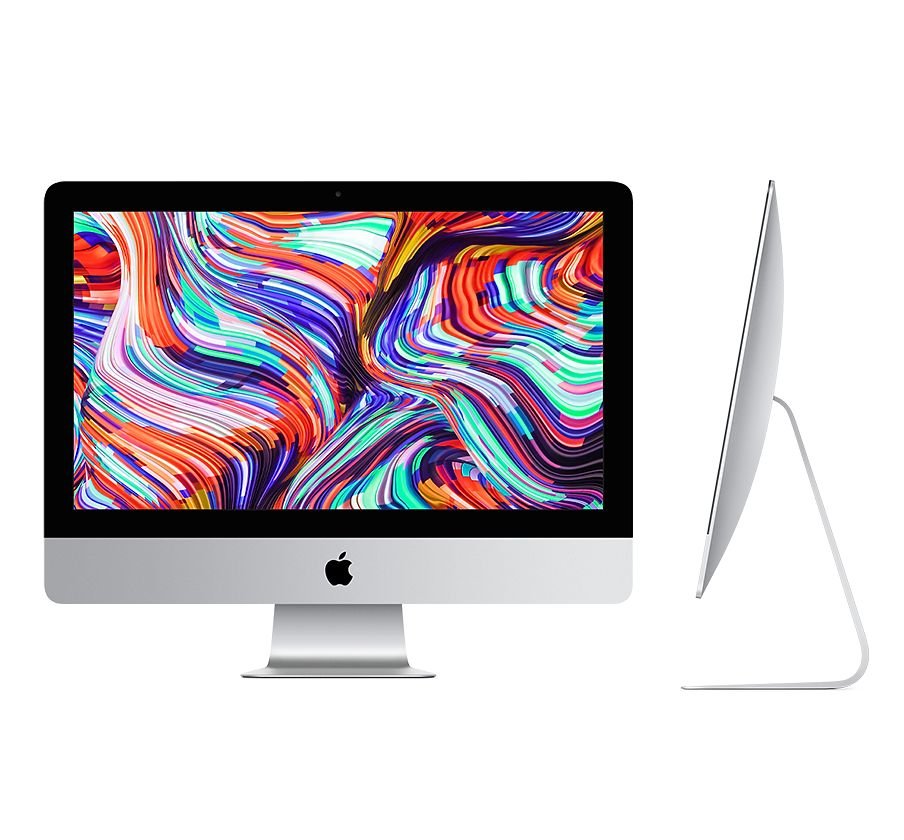21.5-inch iMac 4K vs 27-inch iMac 5K: Which should you buy?


The best Intel-based iMac you'll ever see
The iMac (2020) is probably the last 27-inch model ever to feature Intel processors inside. This one has new features that will keep it future-proof for many years to come.
For
- Many new features & options
- True Tone display, optional nano-texture glass available
- Can upgrade to 10th-generation Intel Core i9 processor
- 1080p FaceTime HD camera
Against
- No more Fusion drives
- What about Apple Silicone?
- Should you get a laptop instead?

The smallest iMac you can currently buy
This model is just over a year old, but compared to the 27-inch iMac, it feels much older. With a new model probably coming before the end of 2020, it might be best to hold off right now.
For
- Various price points
- Ideal size for many
- Still offers a Fusion drive
Against
- 2020 update is likely coming soon
- Is the display big enough?
Display size isn't the only thing different between the 27-inch iMac 5K (2020) and 21.5-inch iMac 4K (2019). Internally, they are different beasts entirely. Much of this is because one was just refreshed, and the other has not. It's because of this that we're recommending one model over the other. It's time to take a look at the most current iMacs on the market!
Break it down now
Each year, Apple usually releases new iMacs at the same time. That way, internals between both options are mostly the same. In August 2020, however, only the 27-inch iMac received an update. The 21.5-inch iMac, by contrast, was last refreshed in March 2019.
The 17-month time difference between the two release dates means two important things. First, there's no doubt Apple is also about the update the smaller iMac. Second, you should probably hold off on making a new purchase if you have your heart set on a smaller display size. If you want a 27-inch iMac, however, now is the time to buy.
| Header Cell - Column 0 | iMac (2020) | iMac (2019) |
|---|---|---|
| Cost | From $1799 | From $1,299 |
| Display Size | 27-inch | 21.5-inch |
| Weight | 19.7 pounds | 12.1 pounds |
| Processor | Starts at 3.1GHz 6-Core Processor with Turbo Boost up to 4.5GHz | Starts at 3.6GHz quad‑core Intel Core i3 Processor |
| Graphics | Starting at Radeon Pro 5300 with 4GB of GDDR6 memory | Starting at Radeon Pro 555X with 2GB of GDDR5 memory |
| 5K Retina Display | Yes | No |
| 4K Retina Display | No | Yes |
| True Tone | Yes | No |
| Optional nano-texture glass | Yes | No |
| Storage | Starts at 256GB SSD, configurable up to 8TB SSD storage | Starts at 256GB SSD, but you can also purchase 1TB Fusion Drive |
| Memory | 8GB up to 128GB | 8GB up to 32GB |
| Camera | 1080p FaceTime HD camera | 720p FaceTime HD camera |
| Ports | 3.5 mm headphone jackSDXC card slot (UHS-II)Four USB-A portsTwo Thunderbolt 3 (USB-C) ports | 3.5 mm headphone jackSDXC card slotFour USB-A portsTwo Thunderbolt 3 (USB-C) ports |
| Microphone | Three-mic array with directional beamforming | one microphone |
As you can see, there are significant differences between the two iMac models starting with the display size and resolution. All 27-inch iMacs offer a 5K (5120‑by‑2880) resolution with support for one billion colors. All but one of the 21.5-inch models includes a 4K (4096-by-2304) resolution with support for one billion colors. There isn't a 5K model available with a 21.5-inch display.
Looking on the inside, it's clear the larger iMac offers better specs even at the entry-level.
On the 2020 and larger iMac model, there's also True Tone built into the display. With True Tone (carried over from MacBook and many iPads), the color temperature of the screen automatically adjusts to match a user's ambient lighting.
The newer and larger model also offers an optional nano-texture glass option for the first time. Previously introduced on the Pro Display XDR, nano-texture glass offers even better viewing under various lighting conditions, such as a bright room or indirect sunlight.
Looking inside the iMacs
Looking on the inside, it's clear the larger iMac offers better specs even at the entry-level. Here, you'll find up to a 10th-generation 10-core Intel Core i9 processor and 128GB of RAM. It's also the first iMac with a 1080p FaceTime HD camera.
Master your iPhone in minutes
iMore offers spot-on advice and guidance from our team of experts, with decades of Apple device experience to lean on. Learn more with iMore!
In terms of storage, Apple is only offering all-flash SSD on the 27-inch model. By contrast, the older 21.5-inch version still provides a 1TB Fusion Drive as an option, besides SSD. With SSD, overall, you get to experience higher capacity and lightning speed. Plus, because SSD means there are no moving parts, making it less like you'll damage your machine. SSD also offers much faster read-write speeds.
Price, not surprisingly, is the one thing the smaller computer has going for it right now. It's much cheaper than the larger model and could soon be more so were it to get discontinued. Still, you can't forget an update is probably coming soon.
What about Apple Silicone?
Back in June, Apple announced plans to ditch Intel processors for native Silicone over the coming years. The move probably means the current 27-inch iMac is the last to ship with Intel inside. The next 21.5-inch iMac refresh could be one of the first to feature Silicone. However, it's more likely that distinction will come to an upcoming MacBook model first.
Who should buy the 27-inch iMac (2020) model?
If you're a graphics artist or someone who wants the next big thing, go with the iMac (2020) and upgrade it to the spec levels you can afford. No doubt, this will be the best 27-inch Intel-based iMac you'll ever see (and the last for this display size), and it's the one full of new features, standard and optional.
Who should buy the 21.5-inch iMac (2019) model?
If you're in the market for a smaller iMac, you should wait until the rest of Apple's 2020 plans are revealed. There's nothing wrong with the current 21.5-inch iMac. And yet, it could soon be replaced by something much better in just a few weeks. Therefore, you should wait.

Bryan M. Wolfe has written about technology for over a decade on various websites, including TechRadar, AppAdvice, and many more. Before this, he worked in the technology field across different industries, including healthcare and education. He’s currently iMore’s lead on all things Mac and macOS, although he also loves covering iPhone, iPad, and Apple Watch. Bryan enjoys watching his favorite sports teams, traveling, and driving around his teenage daughter to her latest stage show, audition, or school event in his spare time. He also keeps busy walking his black and white cocker spaniel, Izzy, and trying new coffees and liquid grapes.
